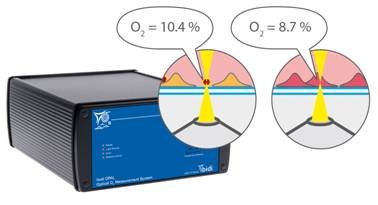For the first time, extra- and intracellular O2 concentrations in cells and tissues can be quickly determined-in just a few seconds-with the ibidi OPAL System. Subsequently, cell culture conditions can be adapted to the real conditions in tissues. In contrast to existing technologies, the OPAL measurement is non-invasive and occcurs in real time, making it ideal for in vitro hypoxia conditions, such as 3D cultures, spheroid models, and tissues.
The OPAL technology was developed by ibidi's cooperative partner, Colibri Photonics, from Potsdam, Germany and is now being marketed by ibidi GmbH. "We are very excited to bring this innovative new technology into the market", explains Dr. Roman Zantl, President at ibidi GmbH. "We, along with Colibri Photonics, want to advance the knowledge of oxygen conditions in cell culture, because this is a crucial factor in cancer treatment."
Cells will only behave naturally when they are cultured under the specific conditions of their biological environment. In mammals, the most prominent conditions are temperature, pH, O2 and CO2 concentration, and constant concentrations of salts and nutrients. In order to achieve biologically relevant results, it is crucial to maintain these conditions on the microscope stage during live cell imaging experiments.
In addition to controlling the oxygen concentration in the stage top incubator, it is indispensable to know the real oxygen concentration near the cells, or even inside the cells. Because cells consume oxygen, the concentrations are typically much lower in cell clusters, such as tissue or spheroids.
With the ibidi OPAL Optical O2 Measurement System, it is now possible to measure the real oxygen concentration directly inside the Petri dish. Oxygen sensitive beads, or nanoparticle reagents, are used in combination with the ibidi OPAL System. By identifying changes in the fluorescence lifetime of these particles, the oxygen concentration in the immediate neighborhood, or directly inside the cells, can be determined.


